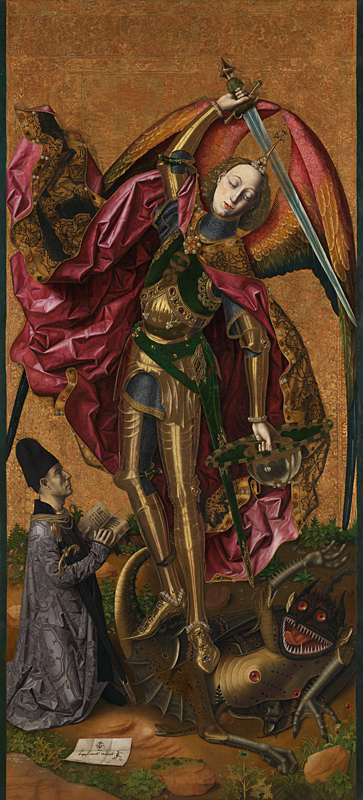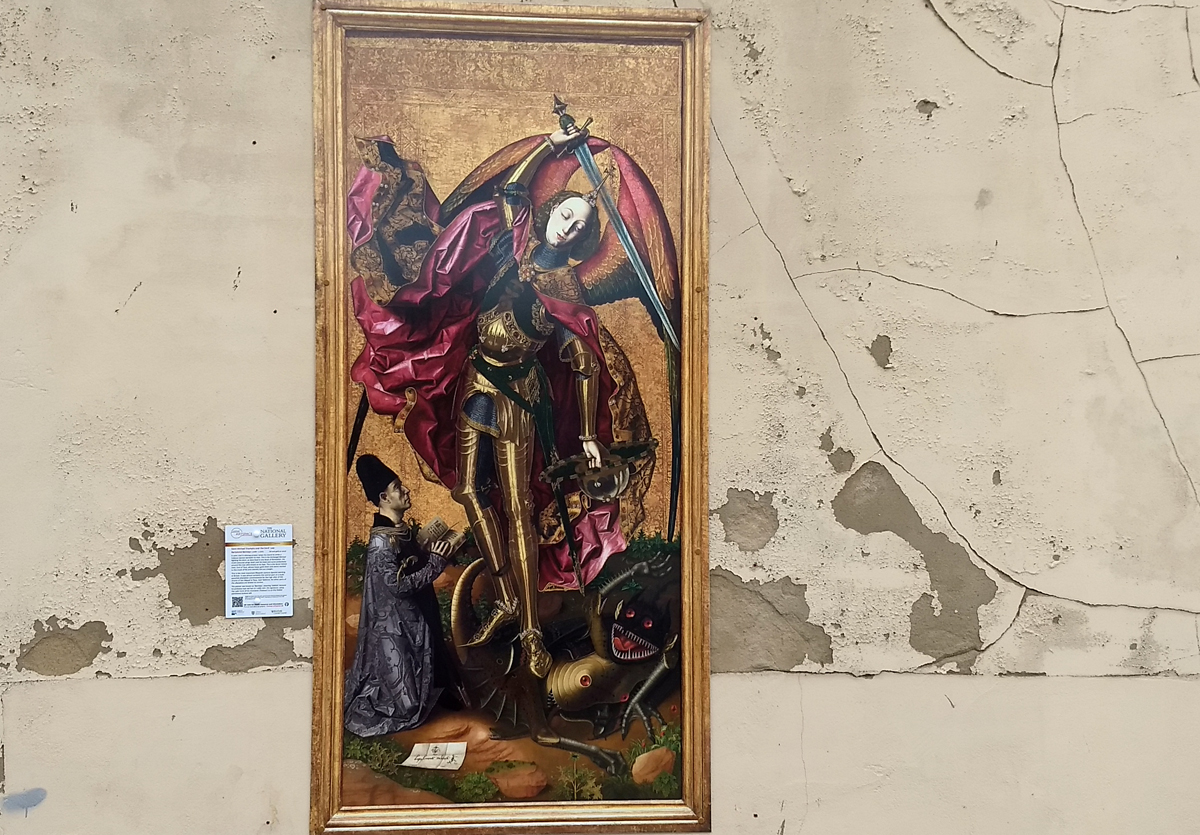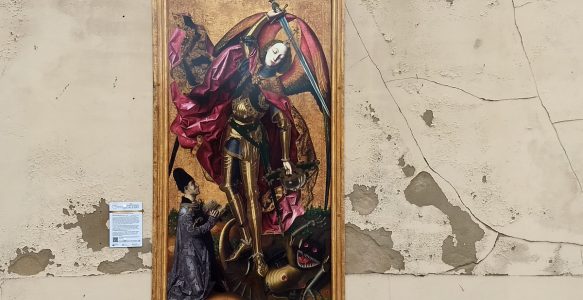You can find St Michael on the wall in the Co-op car park off Garden Street

Saint Michael triumphant over the Devil with the Donor Antoni Joan, 1468
Bartolomé Bermejo
Oil and gold on wood 179.7 × 81.9 cm
A saint clad in shining armour raises his sword to strike a hideous demon beneath his feet. This is the Archangel Michael fighting the devil, as described in the Book of Revelation. His multi-coloured wings meet over his head and curve protectively around the man who kneels at his feet. This is the donor Antoni Joan, lord of Tous, his heavy gold chain and sword nestled in the crook of his arm identifying him as a knight.
This is the most important fifteenth-century Spanish painting in Britain. It was almost certainly the central part of a polyptych (multi-panelled altarpiece) commissioned for the high altar of the church of San Miguel in Tous, near Valencia. De Cárdenas, known as ‘Bermejo’ because of his red hair or ruddy complexion, has signed the painting on a folded piece of parchment at the bottom left, using the Latin version of his nickname, ‘Rubeus’.
Read more at NationalGallery.org.uk
Bartolomé Bermejo
Bermejo’s real name was Bartolomé de Cárdenas, but he was known by his nickname ‘Bermejo’ meaning red, which suggests that he was red-haired or ruddy-faced. He was probably born in Córdoba in southern Spain in about 1440 and worked in Valencia, Zaragoza and Barcelona.
His proficiency in the use of the oil-painting technique suggests that he may have trained in the Netherlands, or at least had knowledge of Netherlandish paintings circulating in Spain. Some twenty or so works by him survive. He is recognised as the greatest painter of 15th-century Spain.


